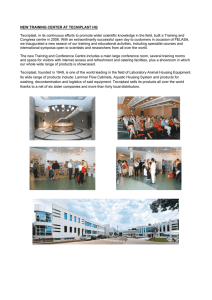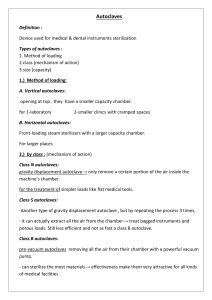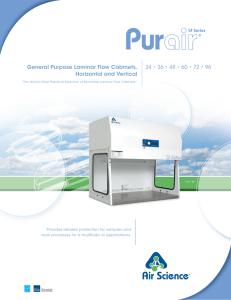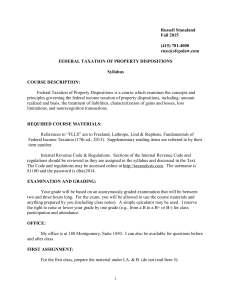Biological Laboratory Safety
advertisement
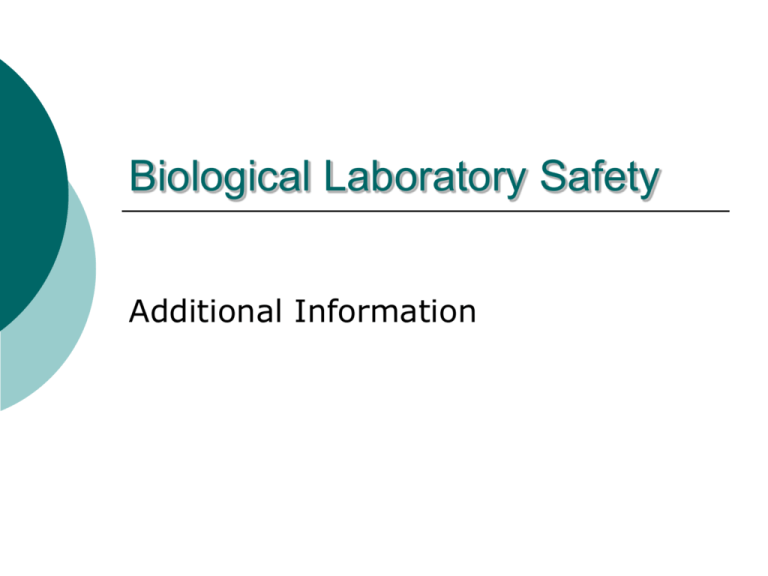
Biological Laboratory Safety Additional Information Where to start Before looking at this presentation, ensure that you have watched the one on General Laboratory Safety What are the additional hazards from using Biological Materials? Infectious agents Toxins Prions Bacteria Viruses What legislation applies? The main pieces of legislation are: Genetically Modified Organisms (Contained Use) Regulations 2000 Control of Substances Hazardous to Health Regs 2004 Each will be summarised separately Control of Substances Hazardous to Health Regs 2004 Four Hazard Groups No hazard group 4 (highest risk) work in Sheffield Work on hazard group 3 requires special training and Level 3 containment facilities Risk assessments to be submitted to local LGMSC for scrutiny for all GM work and work with dangerous pathogens Appropriate waste segregation required Genetically Modified Organisms (Contained Use) Regulations 2000 All work to be risk assessed using the HSE risk assessment form and be submitted to the Local Genetic Modification Safety Committee before work starts Approval & notification procedures Workers to submit health declarations to Occupational Health Appropriate waste segregation Protective Clothing An appropriate laboratory coat must always be worn, fastened up and covering all normal clothing Lab coats must be decontaminated before laundering Appropriate eye protection must be worn Gloves must be worn for work and must be removed when handling taps, note books etc and before leaving the laboratory Blood & bodily fluids Use screened animal blood, rather than human blood if possible Failing this use only screened human blood All blood and bodily fluids should be considered potentially infectious and treated with due care Injuries involving body fluids must be reported to your supervisor IMMEDIATELY Spillages Report Wear protective clothing Clean up Decontaminate – ensure that you always have material available to do so Ensure waste is disposed of properly You spill = you clean up! Laminar Flow Cabinets Laminar flow cabinets are designed to provide a clean-air environment to protect the work They DO NOT provide protection for the operator Biological Safety Cabinets Class 1 Some protection to user & environment No protection to work Class 2 Good protection to user, the environment and the work Class 3 Total enclosure You must choose the correct safety cabinet for the job you are doing. Seek advice from your Biological Safety Officer Autoclaves Potentially dangerous equipment Require regular maintenance and an annual statutory examination Discard autoclaves must be calibrated every 6 months You must be trained to use them Disposal of Waste Make sure you follow the University policy carefully Ask your supervisor or a senior member of technical staff if you do not know the correct disposal method for the materials with which you are working When in doubt – ASK!!! Do not carry out a new or unfamiliar procedure until you have been fully trained & understand the precautions necessary for safe working DO NOT GUESS!!!!
